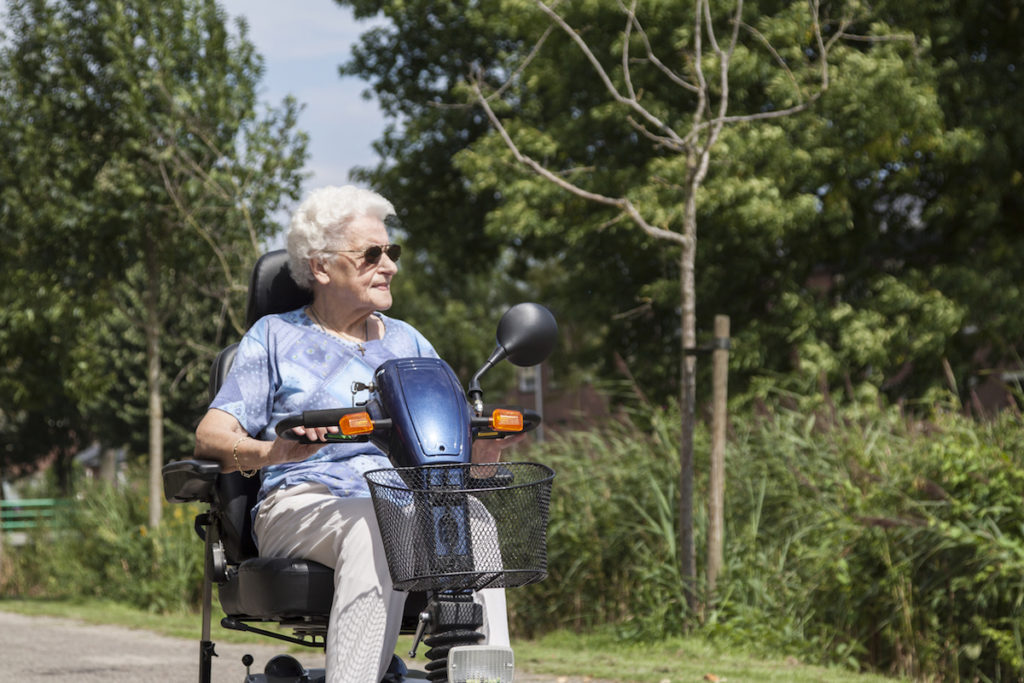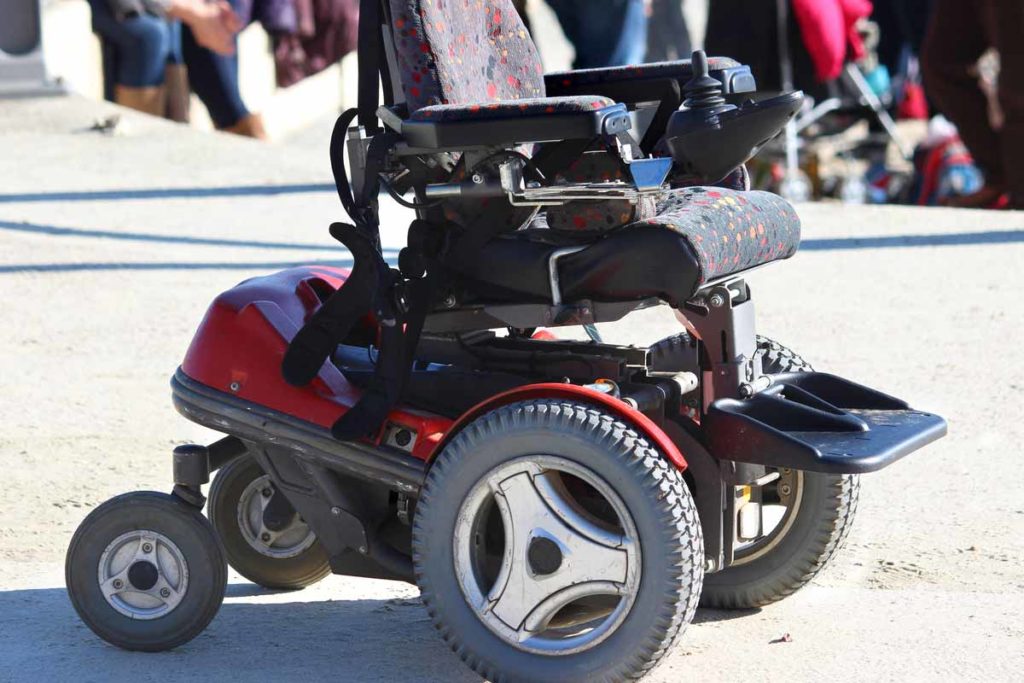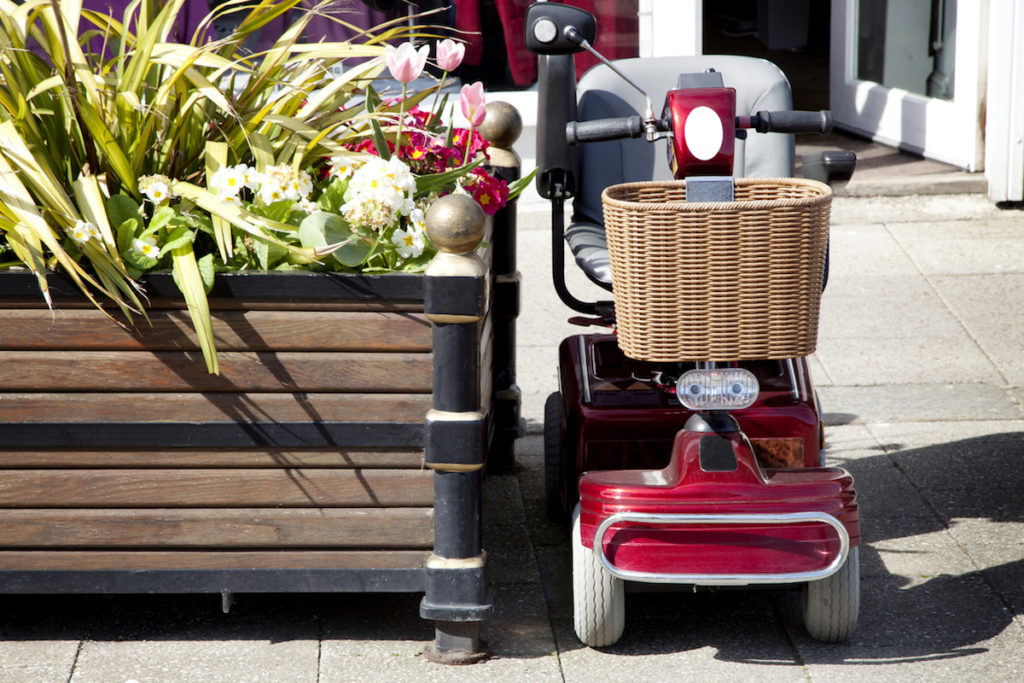Sometimes, an injury will require a wheelchair. In other instances, it may be that balance, stability, and stamina just aren’t what they used to be and you need assistance to get around. Either way, wheelchairs shouldn’t be considered as a negative, they should be looked at as an opportunity to continue your life and allow you to stay independent for longer.
Advantages
Mobility
As we get older, we just naturally get more unsteady on our feet. We are slower than we once were, our muscles and joints are weaker and unfortunately, that makes us more prone to falls. Much needed medication can also play a role in our balance and stability.
The main advantage of a wheelchair is it keeps you mobile. If an injury or chronic health condition keeps you from being as active as you once where, a wheelchair is a good way to regain much of your mobility.
There are two types of wheelchairs – manual and power. Manual wheelchairs are either self-propelled or companion propelled – meaning that either you will have to use your own body strength to move the chair or a loved one will have to push you. Power or electric wheelchairs run on a motor and two batteries and are controlled, most often, through the use of a joystick of some sort.

Studies have shown that feeling isolated or alone can lead to a decline in cognitive abilities and a possible increase in dementia in senior citizens.
Staying Independent
Wheelchairs also help extend independence. Most people don’t like to have to ask someone to do simple tasks for them. If you aren’t able to stand or walk for long periods of time, you may become more reliant on a loved one than you’d like. Being able to get to where you need to go with the use of a wheelchair helps you regain that independence.
Wheelchairs will also allow you the freedom to get out of the house more and do fun things again. Whether it’s eating with friends, enjoying time outside or just picking up a prescription – a wheelchair can aid you in participating in things you might not have been able to before.
Health Benefits
You may have once been a very active adult, but now chronic health conditions force you to stay at home. Not being able to get out to take care of needs like grocery shopping or getting prescriptions or just being able to visit with friends or family can take its toll. It can cause the world around you to become very small, often leading to isolation, loneliness and depression.
Being able to get out, even occasionally and for short periods of time, can make a big difference in your outlook on life and overall well-being.
Studies have shown that feeling isolated or alone can lead to a decline in cognitive abilities and a possible increase in dementia in senior citizens. It can even put you at risk for high blood pressure. Lack of mobility can be a major factor in the onset of depression. Concern over not being able to do things for yourself can lead to a decline in your mental health.
Being able to get out, even occasionally and for short periods of time, can make a big difference in your outlook on life and overall well-being. Wheelchairs can provide that option and health benefit, to some degree.
Being able to move around and be active outside the home with the use of a chair can change your outlook on your situation and your life.

Adjusting to a Chair
If you have never used a wheelchair before, it will take some time to get adjusted. Make sure you know how to properly use the chair – whether manual or power – before venturing out too far.
With any chair, you will want to be aware of your surroundings. Be sure you locate the wheelchair accessible ramps or cuts in sidewalk curbs to be able to go where you need to go. Watch out for glass, just like a car, it can puncture your chair’s tire.
Consider your accessory options. There are so many items on the market to make using a wheelchair easier. Seat cushions are important. Sitting for long periods of time can cause pressure sores. You will want to look for a seat cushion that’s right for your needs, or at the very least, adjust your body every few minutes to avoid developing pressure sores.
You may notice the slope of the land more drastically in a chair than you would on foot. Anti-tippers will help keep you from tipping over. Wheel locks can help keep the chair in place when you are getting up and sitting down.
It may take you some time to get adjusted to the foot paddles – where they need to be when you stand up or sit down, or how to keep them out of the way if you are self-propelling a manual wheelchair.
If you plan to use your chair inside your home, you may also need to make some adjustments there. Look around for rugs that may get caught up in wheels or furniture that you may bump into. Some minor adjustments can make your home more wheelchair friendly.
Adjustment to the chair can take some time, so be patient and flexible. You will eventually figure out what works best for you.

Vive Wheelchair Bag – Electric Wheel Chair… $20.99

Wheelchair Side Bag with Large Cup Holder – Arm… $21.00

Vive Wheelchair Cushion – Gel Seat Pad for Coccyx,… $52.99
Considerations
It’s best to assess your mobility needs before you buy a wheelchair.
Cost
Wheelchairs can range from relatively inexpensive to incredibly pricey. It’s best to assess your need for the chair before you buy. If you are only going to use the chair for occasional trips out where you might be on your feet for longer than you can withstand, a less expensive, manual chair may fit your needs. If your chair is going to be used more consistently, both in and out of the home, a more expensive model may be best.
Manual wheelchairs can start as low as 100 dollars and go up to 1,000 dollars or more, depending on a variety of factors. A more lightweight model with more features will cost you more money. Power wheelchairs are more expensive. They can cost anywhere between 2,000 dollars and 15 thousand or more.

Accessories for your chair can add another layer of cost. Some accessories, like hook and lock Velcro bags for your personal belongings can cost between 20 and 50 dollars. While ramps and pull behind wagons can cost over 100 dollars. Medicare Part B will cover some, if not all, of the cost of a wheelchair but you will have to meet some Medicare guidelines. Your doctor will also have to submit a written order saying a chair is a medical need for you to qualify for the benefit.
Home Modifications
You may only need your wheelchair when you leave your home, or it may become your trusted friend to get you to and from every room in your house. You may need to make some modifications to your home, to ensure you can get around as you need to.
- Install ramps at your doors. That will allow you easy access inside your home.
- Check your hallways and doorways to make sure a chair will fit through them.
- Install grab bars in bathrooms to make it easier to transfer to and from the shower and toilet.
- Raised toilets allow for easier transfer from the chair to the toilet because the heights are more closely in line
- Install grab bars and safety rails around your home – beside your favorite living room chair or your bed – to make it easier to transfer from the chair to the other furniture.

Prairie View Industries SFW330 Portable Singlefold… $209.99

SALEMoen R8960FD 30-Inch Flip-Up Screw-In Bathroom… $83.85

Vaunn Medical Elevated Raised Toilet Seat &…$59.20
Safety
Staying safe is crucial. There are some things to keep in mind as you get adjusted to a wheelchair.
- Before you get in or out of your chair, make sure you lock the brakes on manual chairs. On power chairs, be sure and turn the power off.
- Don’t let your young grandchildren ride on battery cases or the footrest. It can cause them to break.
- Don’t put heavy loads on the back of your chair. It can cause you to tip over.
- Keep things away from the wheel spokes. They can get caught inside and break the spoke or damage the chair.
- If you can, avoid going up or down steep slopes. That can lead to tipping over as well.
- Program a power wheelchair so that it doesn’t go faster than you need it to, especially in reverse.
- Try to keep your chair out of the rain. Most chairs aren’t waterproof, and rain can damage controls and parts. The water can also cause you to lose traction.
- Lift the footplates before you get in or out of the chair. This will keep you from tripping over them.
Maintenance
Keeping your wheelchair in good, usable condition will require some maintenance and care on your part. Read your owner’s manual when you get your wheelchair. It will explain all the parts of the chair and how to take care of each of them. It will also tell you when to seek professional repair and how often you should have the chair serviced.
General use will get your chair dirty, so it’s important to regularly clean your chair. You can wipe it down with a damp cloth. If it has sticky spots or stains, you can use a mild detergent to scrub with. Hair, string, leaves and many other items can interfere you’re your wheel rotation. You can remove debris from the wheel axle or caster bearing with a sharp tool or pick.
The use of a wheelchair can change that by giving you the ability to move around and enjoy your life at home.
Check the upholstery, fabrics, and the frame of the chair for any cracks or breaks. If you have any in need of repair, those will need to be addressed by a professional.
Regularly check the air pressure in your tires, as well as inspect them for general wear and tear. Keep an eye on screws, nuts and bolts to make sure they haven’t come loose and be sure other equipment isn’t wearing out. If lubrication of parts is needed, use an all-purpose silicone lube spray instead of petroleum oil.
The option of using a wheelchair – whether manual or power – can open a whole new world for seniors who might otherwise feel isolated at home. Health problems can lead to a decrease in mobility, but the use of a wheelchair can change that by giving you the ability to move around and enjoy your life at home.
Do you want to cite this page? Use our ready-made cite template.
